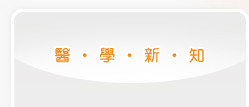藉由捐卵之試管嬰兒(IVF)療程,評估玻璃化冷凍 (vitrification)對卵及胚胎後續發育能力的影響。並比較婦女進行IVF時,卵或胚胎是否有經過vitrification,其懷孕率的差別。
美國喬治亞州Assisted Reproductive Laboratory in Atlanta的Zsolt Peter Nagy說明:「近期在卵子vitrification的進步,提供正經歷重大疾病 (如:癌症)的婦女,提供保存生育力的另一種選擇。」為了暸解vitrification對結果的影響,Nagy及其團隊將進行IVF的婦女分為如下4組:
| |
case no. |
embryo |
oocyte |
implantation rate |
pregnancy rate |
| |
fresh |
frozen |
fresh |
frozen |
| Gr.1 |
157 |
● |
|
● |
|
50 |
61 |
| Gr.2 |
64 |
|
● |
● |
|
32 |
53 |
| Gr.3 |
247 |
● |
|
|
● |
42 |
59 |
| Gr.4 |
33 |
|
● |
|
● |
42 |
60 |
第一組以新鮮的卵子受精後,植入新鮮的胚胎,其著床率 (implantation rate)為50﹪,懷孕率 (pregnancy rate)為61﹪,其他各組的結果相近。因此Nagy建議他的團隊:雙重玻璃化冷凍對胚胎的發育潛力並無負面影響。
Source: European Society for Human Reproduction and Embryology 26th Annual meeting; Rome, Italy: 27-30 June 2010



